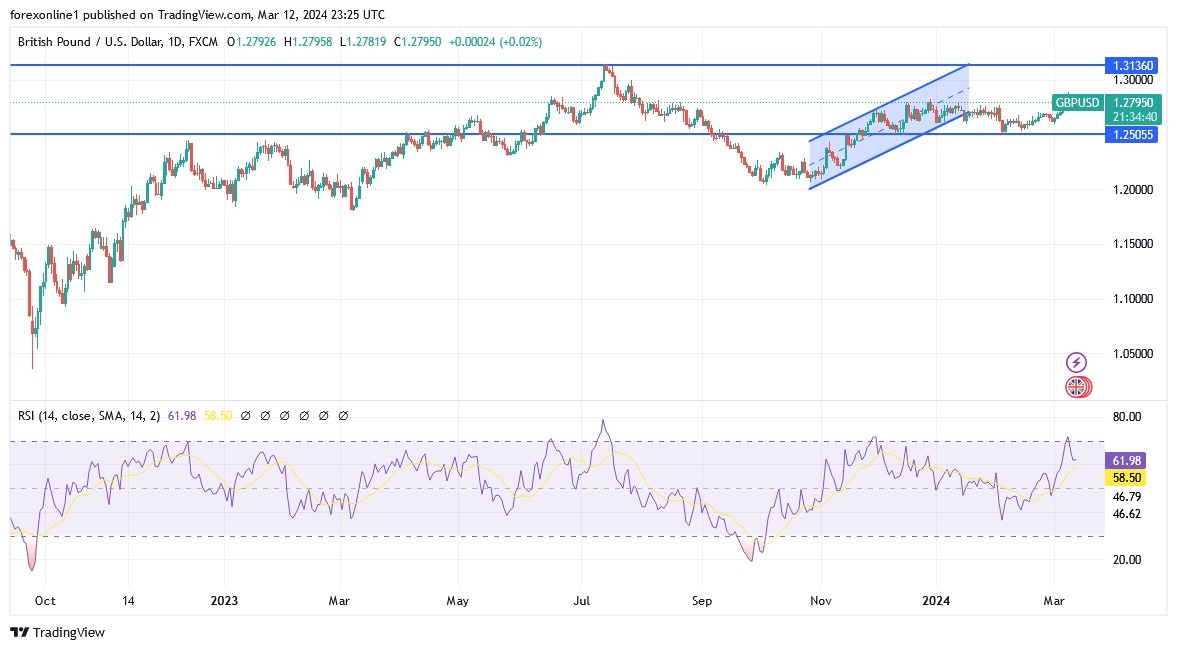- Weaker-than-expected UK wage and employment data boosted the chances of a June rate cut by the Bank of England and led to broad-based weakness in the pound.
- According to currency trading platforms, GBP/EUR continued to decline this week to 1.1708, and GBP/USD fell to the support level of 1.2746 before stabilizing around 1.2793 at the time of writing the analysis.
- Recently, the sell-off in the pound was supported by the reaction to the economic data results.
The Office for National Statistics said average earnings, including bonuses, rose 5.6% in January, below the 5.7% expected and below 5.8% in December. Excluding bonuses, average earnings rose 6.1%, down from 6.2% in December, which was also the level expected by the market. As a result, the sterling dollar gave up the 1.2800 resistance which could give the bulls positive momentum.
Saxo Bank analysts commented on the recent performance of the pound, saying: "The pound has been the best performing G10 currency so far this quarter, but sterling's resilience will be tested with much of the good news now priced in and wage pressures starting to rise."

According to the economic calendar, the Office for National Statistics reported that the UK unemployment rate unexpectedly rose to 3.9% in January from 3.8% in December, as employment fell by 21,000 in the three months to January compared to the three months to November. The UK's estimated number of vacancies fell by 43,000 in the three months to February to 908,000; however, the number of vacancies is still above pre-Covid levels.
UK wages remain high enough to be inconsistent with the Bank of England's target of achieving 2.0% inflation on a sustainable basis, but the trend is clear. Moreover, the decline in vacancies and the rise in unemployment point to an ongoing process of labor market easing, which will put further downward pressure on wages, allowing the Bank of England to cut interest rates in the summer.
Overall, the pound could come under pressure if upcoming data leads to increased chances of a rate hike in June.
According to analysts: “The decline in wage growth in January may still be a bit slow to satisfy the Bank of England.” Added, “But there are encouraging signs that a significant slowdown is just around the corner, and that an interest rate cut in June is possible.” However, others say the decline in wage growth is encouraging “but certainly not a victory for the Bank of England,” which will still look for a cautious approach to lowering interest rates. Although sterling has been trading softer in the wake of this data, the downside should be limited, and we expect the currency to maintain its position as one of the best performing currencies in 2024 in the G10. According to analysts at ING Bank, the Bank of England will cut interest rates in August, which means that it will cut interest rates after the European Central Bank and the US Federal Reserve, based on current market expectations. In the Forex world, where the timing of interest rate cuts is important, this can ensure that the pound remains supported against the euro and the US dollar.
Top Forex Brokers
GBPUSD Expectations and Analysis Today:
After announcing a stronger than expected rise in US inflation rates, the downward momentum increased in the performance of the price of the British pound against the US dollar GBP/USD. According to the performance on the daily time frame chart above, the movement of the currency pair’s price and breaking the support 1.2685 will end the idea of the currency pair’s recent upward rebound. On the other hand, expectations for the future of psychological resistance will not return to 1.30 without returning to the 1.2860 level again. Therefore, the GBPUSD pair will be affected today by the announcement of the growth reading of the British economy and the rate of industrial production in the country amidst the absence of important US economic releases.
Ready to trade our daily Forex analysis? Check out the best forex trading company in UK worth using.
